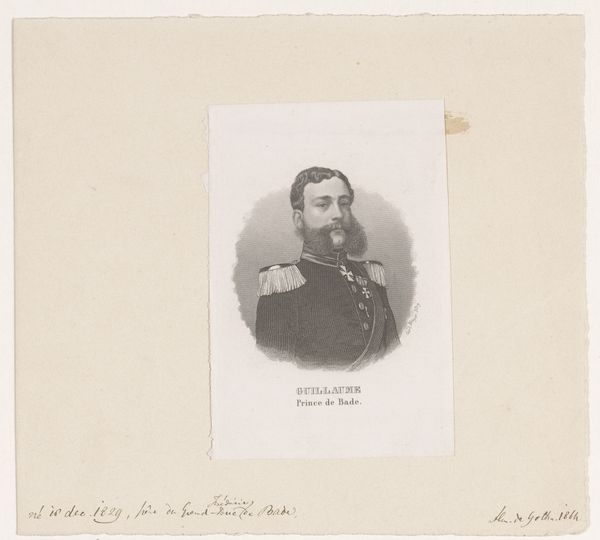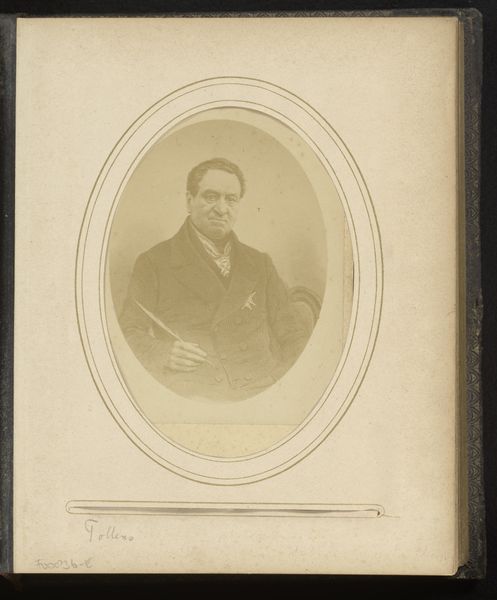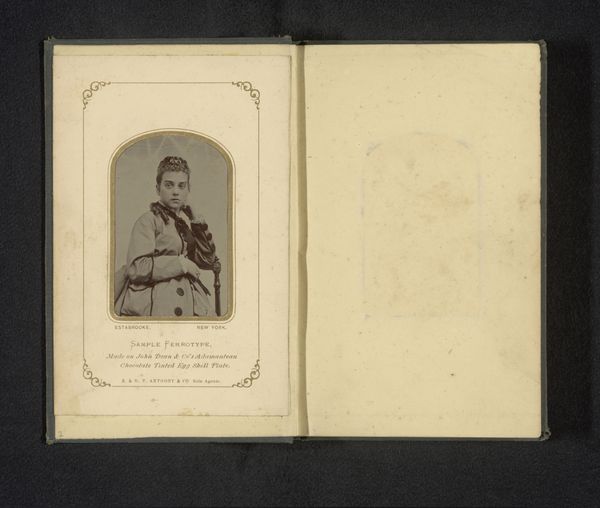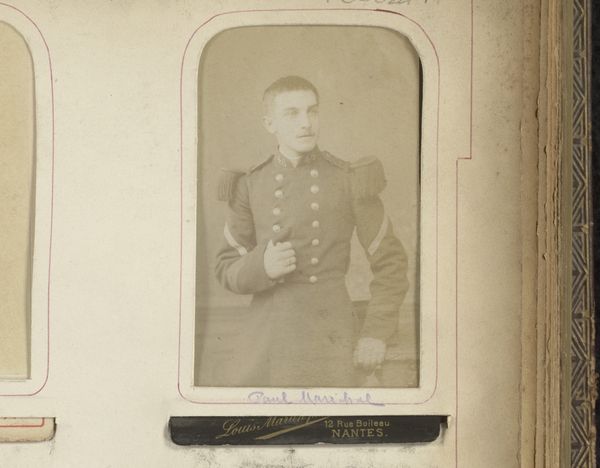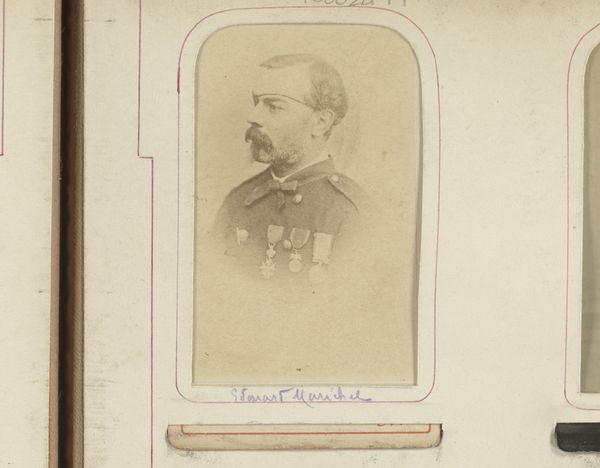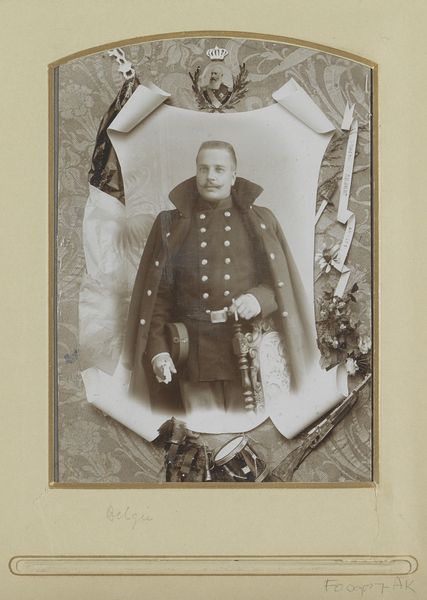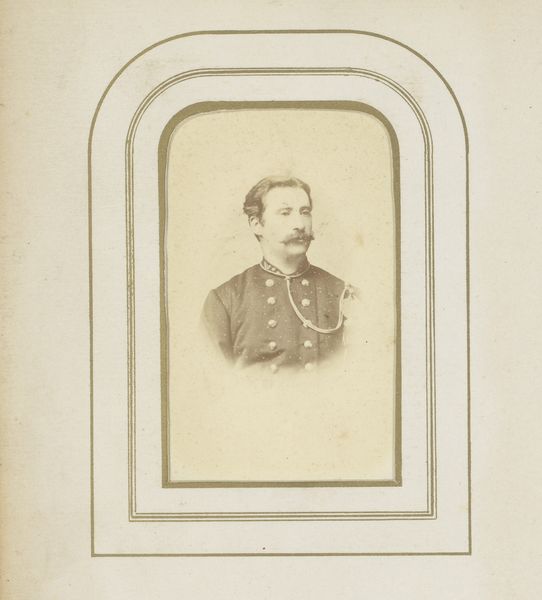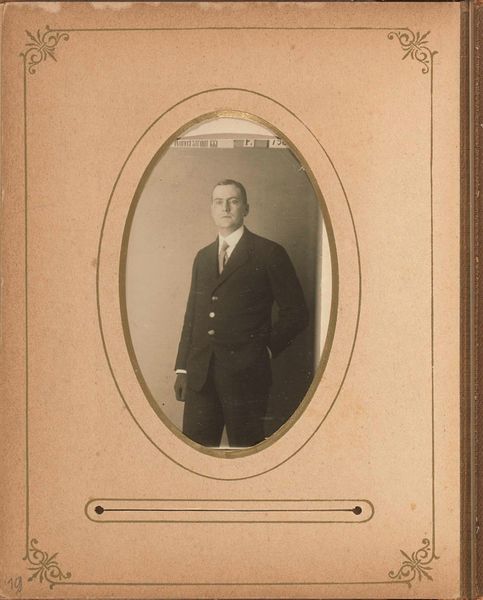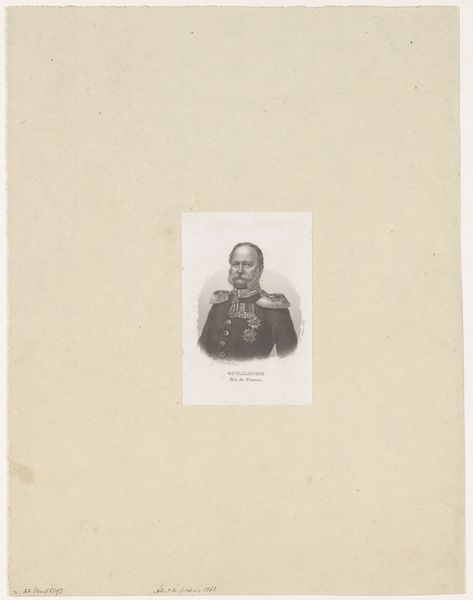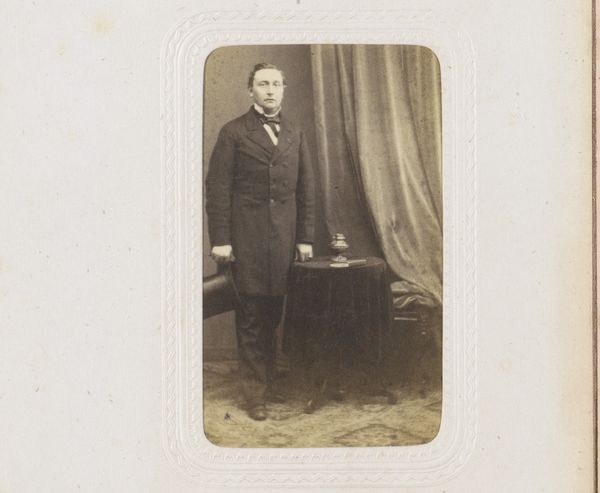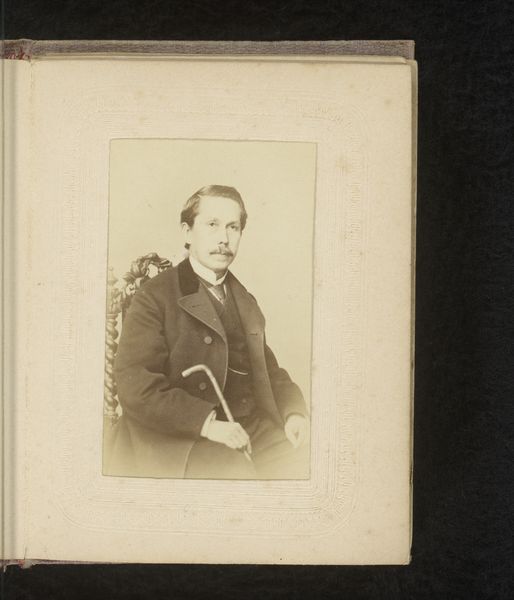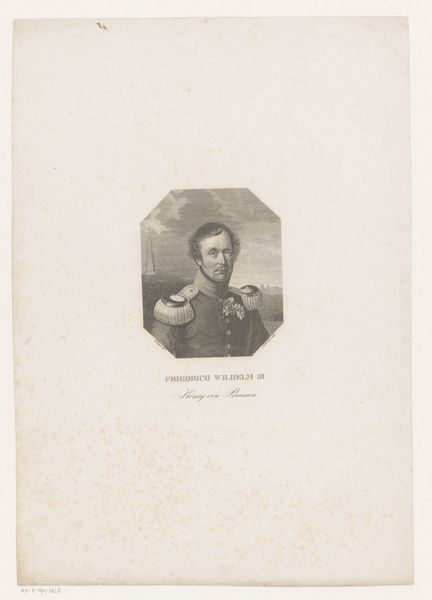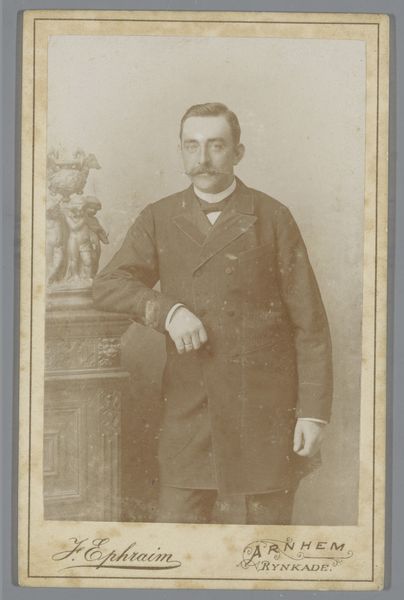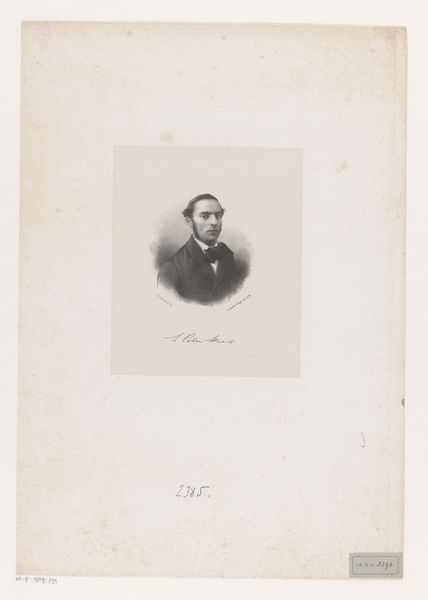
photography
#
portrait
#
self-portrait
#
photography
#
genre-painting
Dimensions: height 104 mm, width 63 mm
Copyright: Rijks Museum: Open Domain
Curator: Here we see a photograph titled "Portret van een man in uniform", taken sometime between 1880 and 1900. It's interesting to consider what this image tells us about the social values of the time. Editor: My initial reaction is its somberness; a heavy, muted palette despite what was probably an elaborate uniform. The almost sepia tone conveys a palpable sense of nostalgia and restrained pride. Curator: Absolutely. Photography during this period was becoming increasingly accessible, thus it afforded a new avenue for individuals to assert their social standing. Consider the details: his confident, yet posed posture; the deliberate inclusion of his military uniform; all tools employed for constructing a public image reflective of order and duty. Editor: I find myself drawn to the shallow depth of field. The soft blurring behind his shoulders flattens the image and draws sharp focus to the face, forcing an intense engagement with his gaze and expression. I also observe some overpainting with grey which has the effect of slightly obscuring some details on the uniform but also reinforcing the idea that the sitter wants to project confidence by using certain stylistic features in the photograph itself. Curator: It speaks to the role of the military and statehood and perhaps also touches upon aspirations towards upward social mobility. These photographic portraits offered a democratizing yet simultaneously restrictive format to claim an identity. Who had access, how they were portrayed, and how these images circulated all dictated the public perception of individuals and power structures within society. Editor: So, as we consider both the image's place within the wider societal narrative and also its pictorial, tonal, and constructional devices we are left considering how art can be both expressive but equally deceptive too. Curator: Precisely, and in engaging with photographs like these, we can reflect upon photography’s historical significance in defining not only the aesthetics, but also power and privilege.
Comments
No comments
Be the first to comment and join the conversation on the ultimate creative platform.
